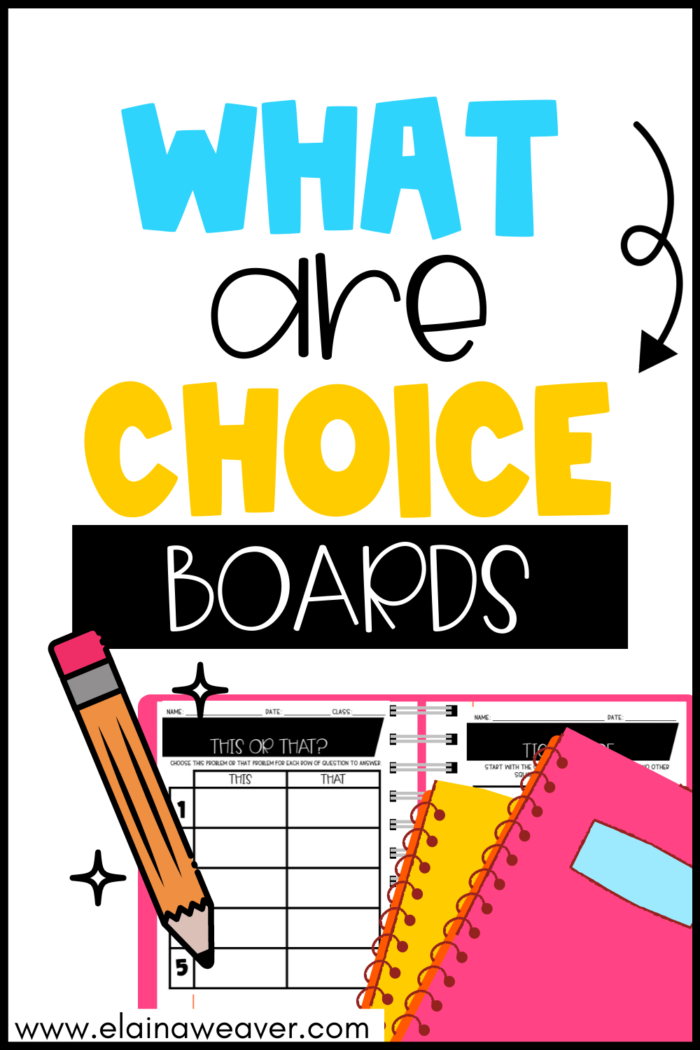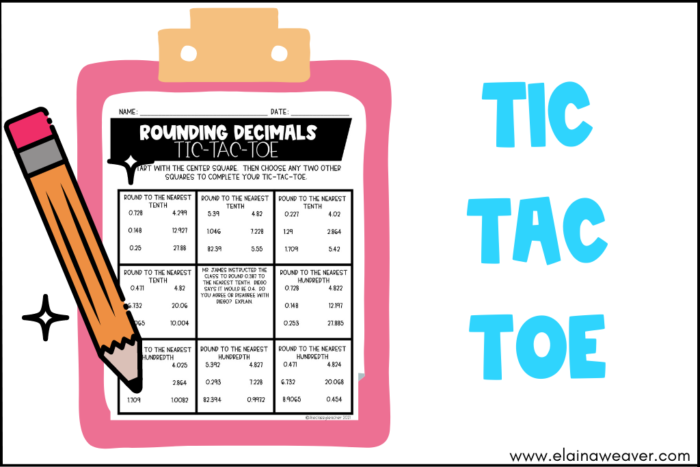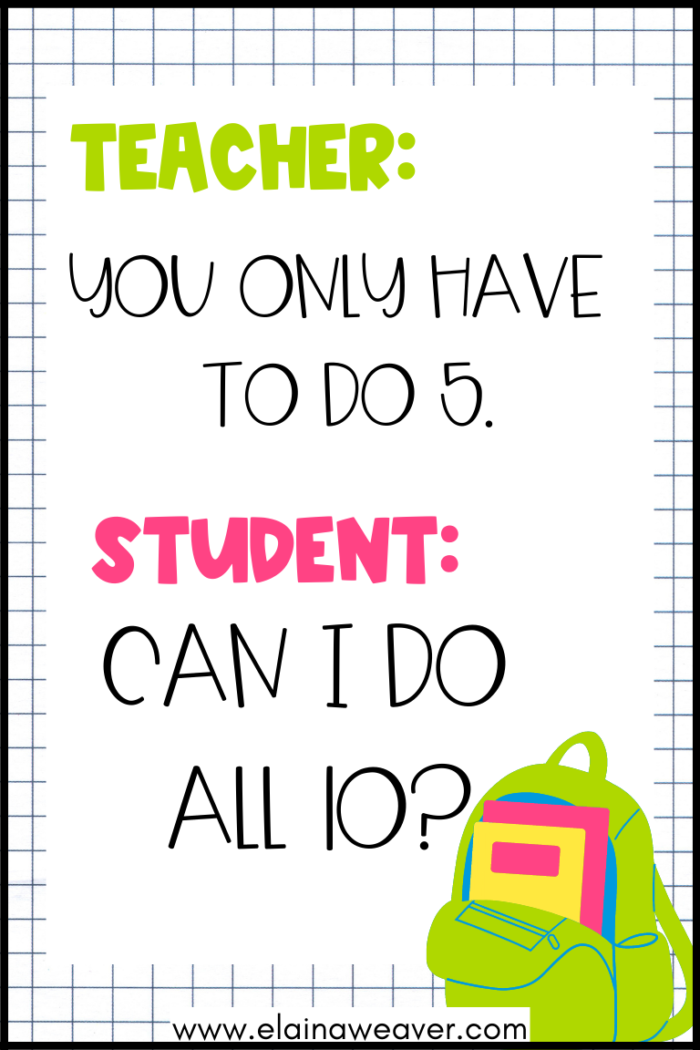Using a choice board for Math has completely changed how my students feel about Math.
Seriously.
Do your students lack confidence when it comes to math? Do they lack the ability to persevere through those more challenging problems?
The answer to those questions was a big resounding YES for many of my students.
Until I started using choice boards.

I have watched my students grow in confidence and start begging to do more math since I implemented choice boards into my middle school Math classroom.
Providing choice to your students doesn’t have to be difficult or time-consuming. Sometimes it is as easy as letting students choose which writing prompt they will answer in their Math journal for the day.
Speaking of writing prompts, I have 25 prompts ready for you to download and start using in your Math classroom today.
What are Choice Boards
Before I tell you why I love using a choice board for Math, I should probably tell you what they are, right?
Many people envision ten different projects with ten individual rubrics when they think about choice boards. Teachers instantly reject choice boards because all they can picture is hours of grading.
And ain’t nobody got time for that.
While choice boards can look like different projects and rubrics, they certainly don’t have to look that way.
When someone asks me, “What are Choice Boards?” my answer is simple.

They are any activity or worksheet that gives students some sort of choice. It might be a choice in the number of problems students will complete or a choice in which problems students will complete.
Choice Board Examples
Here are three of my favorite choice board examples.
1. Tic-Tac-Toe Board – I like to set this one up so that all students must complete the center square. Setting it up this way allows me to ensure every student is practicing the concept or problem type I need them to practice. But where is the choice? Students then choose other problems they want to do to complete the tic-tac-toe board.
In the example below on rounding decimals, I set the choice board up where students had to solve problems both rounding to the nearest tenth and the nearest hundredth. Insert evil laugh here because while students are getting choices, I’m controlling that choice without them even knowing it.

2. This or That – This one was inspired by Instagram. Back when this or that polls were popular in Stories, I was completing one and realized they would make a fun choice board. All student practices the same skill, but they get to choose whether they do this problem or that problem. (This one happens to be my students’ favorite this year).
3. Menu Boards – Are you looking for ways to differentiate your activity? If you said yes, this is the choice board for you. Students choose which problems they want to complete to earn a certain point value. Students who struggle can choose easier problems that are worth fewer points meaning they will get more practice while students who need to be challenged can do fewer but more challenging problems to earn their points.
3 Reasons I Love to Use a Choice Board for Math
Okay now that you know what a choice board is and you’ve seen some examples, let’s get down to business.
Why are choice boards so great?
Why can’t I stop talking about them?
- I actually told you my first reason back at the beginning of this post. Using choice boards has created a space where my students seriously ask to do more math problems.

That conversation has really happened in my classroom and on more than one occasion. And students aren’t asking because they want bonus points. It is seriously the power of choice. If I gave them those same ten problems and told them they had to do all ten, there would be much gnashing and teeth pulling to make it happen.
2. Choice boards are an easy way to differentiate for students without calling attention to any one group of students. Because no two students are required to do the same set of problems or even the same amount of problems, students don’t bat an eye when one student does more or less than another student. I also feel like it cuts down on my planning for differentiation. I’m making one activity or worksheet instead of three or four different ones.
3. Last but not least, providing my students with a choice helps me get to know them better as mathematicians. I will often ask why they did or did not choose a particular problem. This has helped me learn which students are more comfortable with decimals or fractions. It has helped me determine which students are more comfortable with larger numbers. Choice boards can reveal so much beyond the concept students are working on, providing me with great insight into things we can work on in small groups.
Get Started with Choice Board Templates”
Ready to get started using choice boards? Still not sure exactly to start?
Don’t worry. I’ve got you! These editable choice board templates are perfect for beginners. They make it so easy to turn any worksheet or practice problems into a choice board that students are sure to love.
Don’t take my word for it. Here is what one buyer had to say, This resource provided me with great templates to help provide more voice and choice for my learners. It was so nice to be able to just be able to immediately enter in activities/assignments without any of the initial formatting. They are easy to use and also visually appealing. I felt this bundle was worth the money with the amount of time it has saved me.”
Want other options to check for student understanding? Check out this post.


7 Responses
I have used choice boards before with my 6th graders, and want to utilize them more! I completely agree with you that it is interesting to find out why each student chooses certain activities over others. Do you use choice boards more to have students practice specific skills, or to review before an assessment? Thanks!
I am so glad you have used choice boards with your students. I use them for all purposes, but more practice than anything else. I tend to use them most after direct instruction. Giving students that choice provides them with the comfort and confidence they need to practice the new concept.